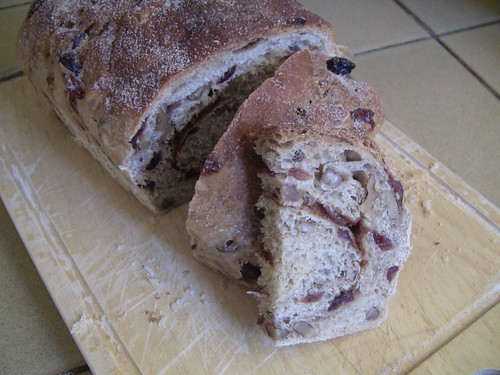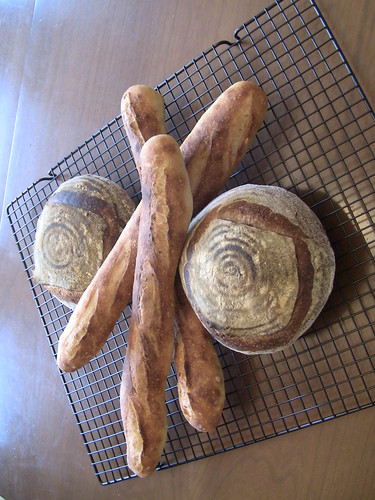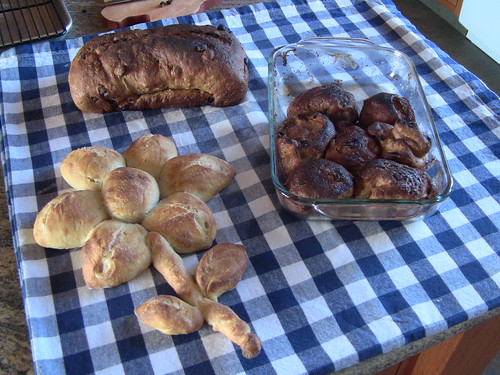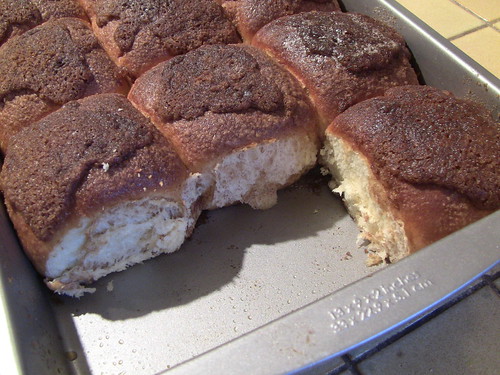Continuing the Italian Theme: Panzanella
My baking this weekend was good, but not novel. I baked more of Sylvia's sandwich buns to have with Bulgogi. Still I feel like I should contribute a blog post this week. So, here's one of the many excellent recipes using stale bread (a plentiful commodity in our household). "Panzanella" (which I believe means "Nell's trousers" in Italian) is a Florentine salad, according to Wikipedia.





